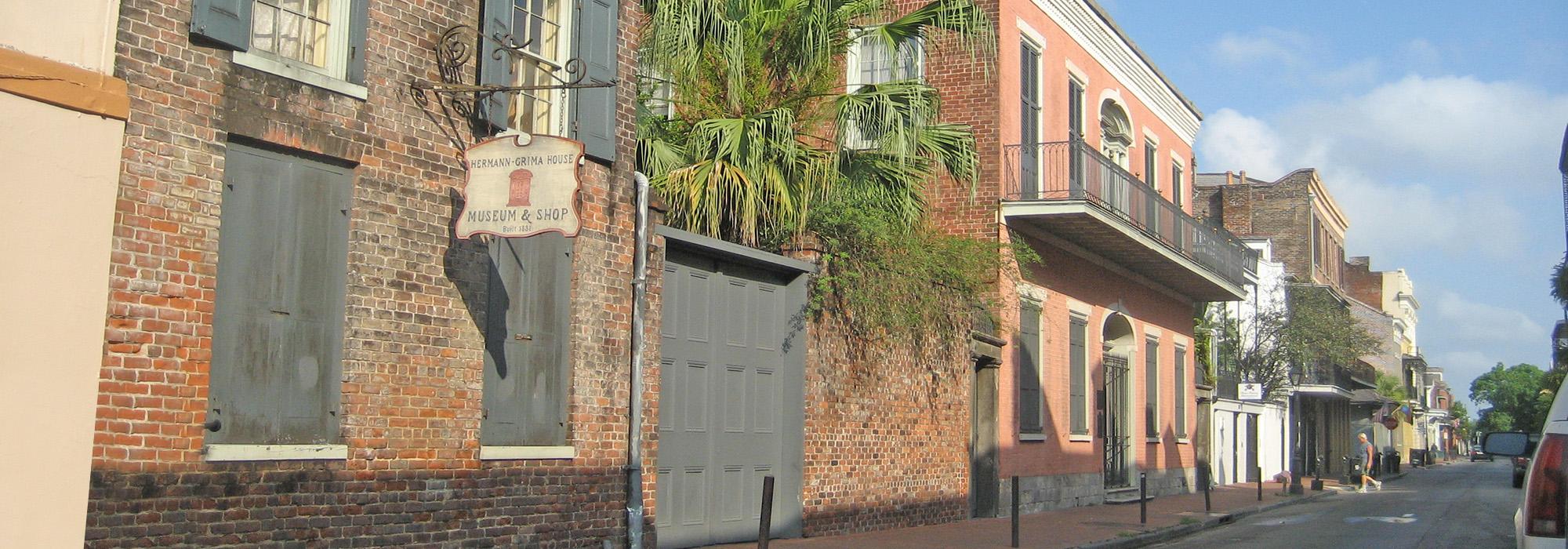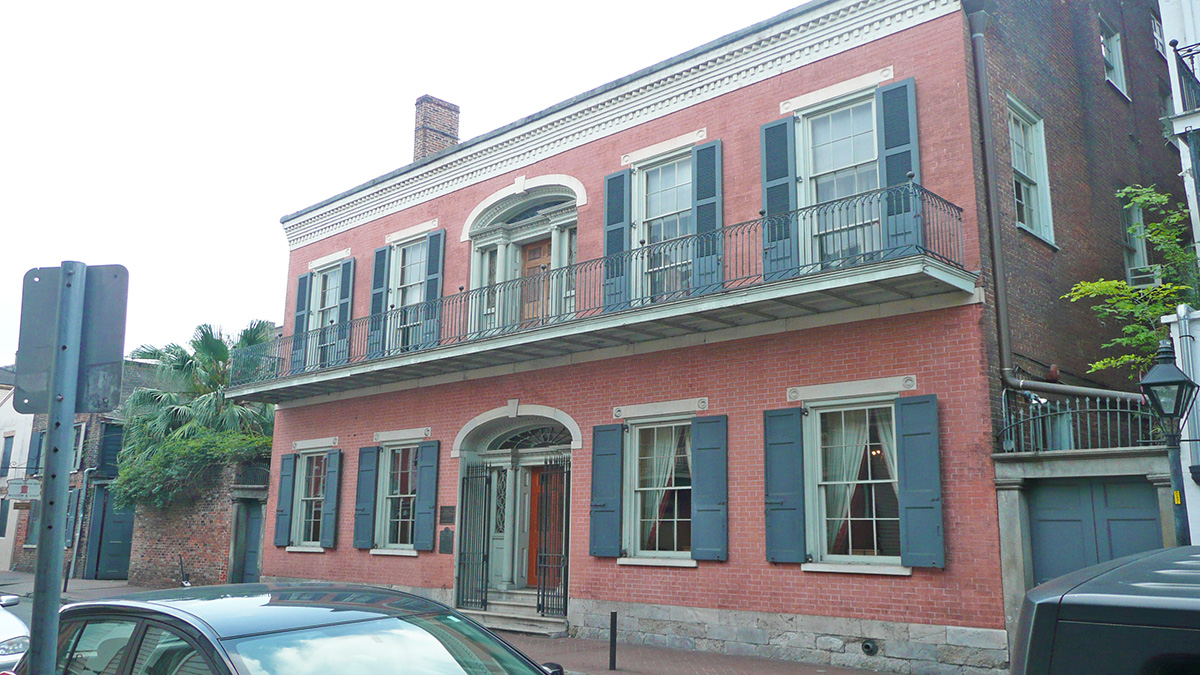Landscape Information
Located in the Vieux Carré, this house constitutes one of the earliest examples of American architecture in the district. It was built in 1831 by Samuel Hermann, a wealthy cotton merchant. Hermann hired architect William Brand to design a brick Federal-style mansion adapted for the tropical climate of New Orleans with the addition of balconies. The Grima family occupied the house from 1844 to 1921. The Christian Women’s Exchange acquired the house in 1924 and converted it into a rooming house for single, low-income women. In 1967 the organization began restoring the property to its appearance in 1831 with the help of architect Samuel Wilson, Jr. and New Orleans Town Gardeners, Inc., and in 1971 the house opened as a historic house museum. Now known as The Women’s Exchange, the organization continues to own and operate the house in conjunction with the Gallier House.
Situated on a narrow urban lot, the house takes up the northern half of the site. To the rear of the house are the work spaces that enslaved workers once used to prepare meals and complete household chores. The rear courtyard features two rows of three parallel rectangular planting beds containing heritage roses, period camellias, historic herb varieties, and fruit trees, including citrus, fig, pineapple, pomegranate, and pear. Just off the courtyard is one of the only functioning outdoor open-hearth kitchens in the Vieux Carré. Extending along the northwestern edge of the courtyard is a long, three-story outbuilding. Between this building and the house is a single-story wing with a curved northeastern corner. The house was listed in the National Register of Historic Places in 1971 and designated a National Historic Landmark in 1974.











